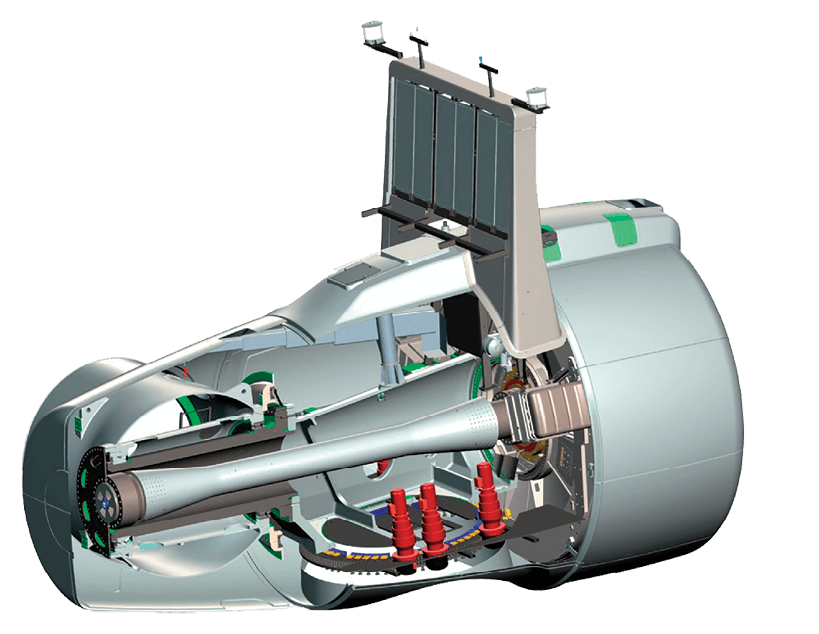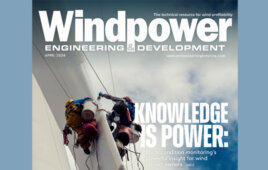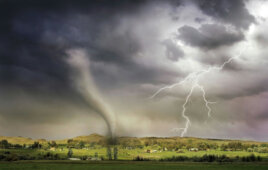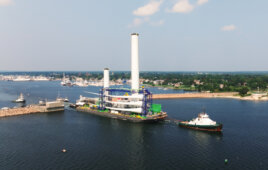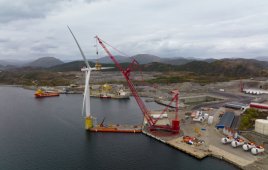If the wind industry is to continue its growth, it will have to continue bringing down costs of the hardware and operating expenses, along with improving reliability. The engineers with Denmark’s Envision Energy have ideas along those lines that do not include three blades and a gearbox.
Who is Envision, you ask? It is a quiet wind turbine OEM with a portfolio packed with about 20 models. And despite their reticence, the company is not afraid to take chances. Consider its Envision 3.6 MW, two blade design. It is unusual enough to deserve recognition as our Turbine of the Month.
Most readers are probably unfamiliar with this company but it already has what it calls a Global Digital Energy Center in Houston, a Digital Energy Innovation Lab in Silicon Valley, and more recently, a blade research facility in Boulder, Colo. The firm also has research center in Denmark where a prototype of the two-blade turbine has been flying for nearly four years. (www.project-gc1.com). The company says it took less than two years to get its two bladed, partial-pitch turbine up and generating power. Company aerodynamic engineer Kristian Godsk made the comments at a Sandia Blade Workshop. He says the design is the first of its kind and suggests that its features can cut 10% off the capital expenditure for offshore turbines.
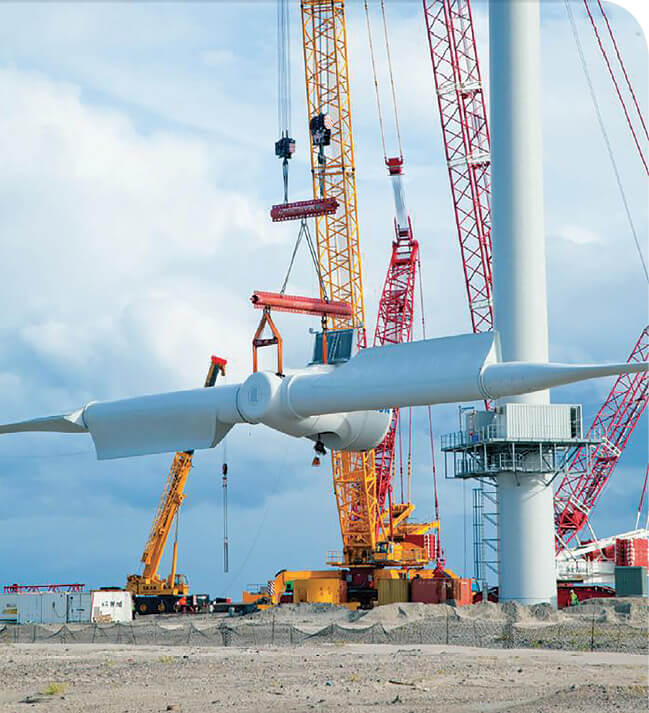
The two blade Envision Energy 3.6 MW turbines also sports two converters each rated for 1.8 MW. Two blades allow several distinct advantages over conventional designs. For one, the hub and blades can be lifted in one unit which lowers construction costs. And the length of the blade extensions can be customized for particular sites.
Inelegantly titled an E128-3.6 PP 2B, the turbine gets most of its advantages from the two-blade design. For instance, having just one fewer blade than a convention three-blade turbine reduces production costs, and that lightens the up-tower mass (15 to 20% less than a three-blade design) which means the tower can weigh less making it easier to transport and erect. Furthermore, the two-blade design allows lifting the blade and nacelle at once, further cutting construction costs.
There are operational advantages as well. For instance, the two-blade rotor can be parked in a horizontal position in high wind, such as typhoons, or shear and remarkably, the blade holds itself horizontal. Envision says the design is fit for sites with extreme-force winds. (See the video here: http://tinyurl.com/envision36)
Innovation in the rotor includes a 22-m center fixed length called an extender. The outer blade lengths pitch independently of the center section and are the source for the PP or partial-pitch reference. Although the extender has a fixed length, it allows customizing the rotor diameter by fitting it with blade tips that match the full rotor length to a site’s prevailing wind speeds. Hence, low-wind speeds would allow longer tips for a greater swept area, and shorter tips for higher wind speeds.
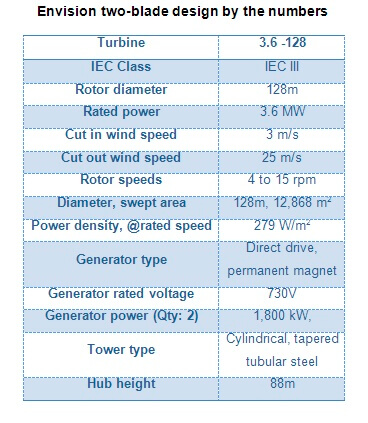 Transformers and converters are mounted in enclosures at the base of the tower, not in the nacelle. In addition, the design sports two converters, each 1.8 MW, making it possible to run on one converter when necessary. The location makes them easier to maintain when offshore. Also interesting is that the main shaft is made of carbon fiber and its flexability damps some of its loads, according to Godsk. He adds that It has been possible to customize the flex and twist in the shaft exactly to operational requirements. This together with the weight distribution (rotor versus generator rigidity) produces a configuration which mechanically ensures good characteristics for low-voltage ride through.
Transformers and converters are mounted in enclosures at the base of the tower, not in the nacelle. In addition, the design sports two converters, each 1.8 MW, making it possible to run on one converter when necessary. The location makes them easier to maintain when offshore. Also interesting is that the main shaft is made of carbon fiber and its flexability damps some of its loads, according to Godsk. He adds that It has been possible to customize the flex and twist in the shaft exactly to operational requirements. This together with the weight distribution (rotor versus generator rigidity) produces a configuration which mechanically ensures good characteristics for low-voltage ride through.
In the most violent storm to sweep the site, wind hit 51 m/s, enough to break a cup off the turbine’s anemometer. But the controls positioned the turbine sideways to the high wind so it suffered no damage. The prototype has been “flying” on the Denmark coast since 2012 in winds that average about 10 m/s.
Filed Under: Featured

